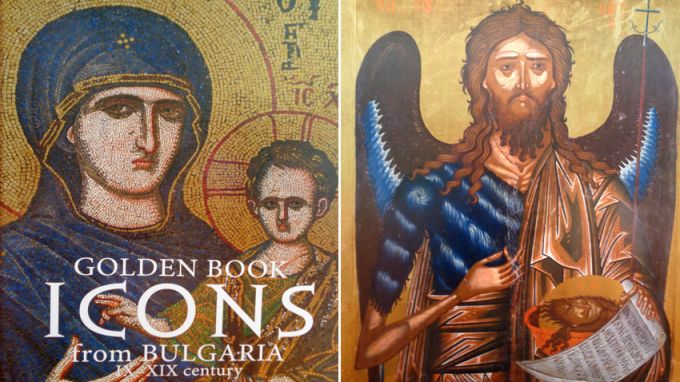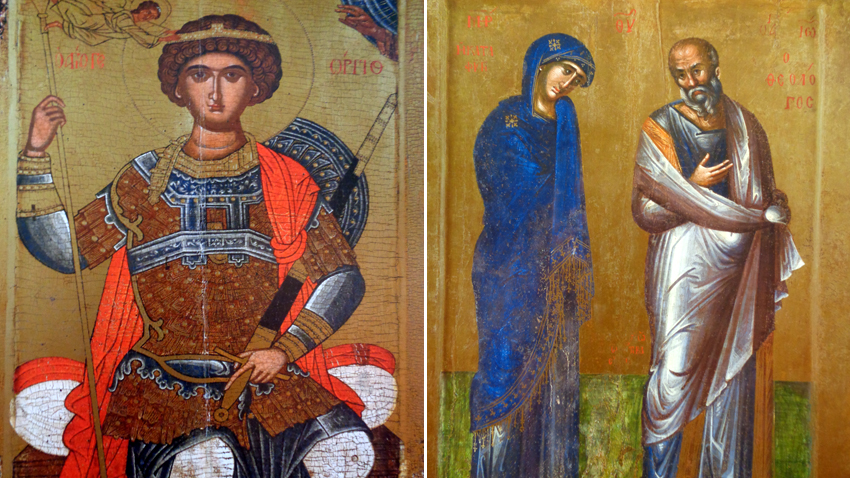 6
6
An exhibition held at the National Palace of Culture in Sofia presented until October 26 a wonderful edition named “Golden Book. Bulgarian Icons pained between the 9th and the19th Century”. Associate Professor Dr Ralitsa Ruseva who is a curator of the Museum of Christian Art with the Saint Alexander Nevsky Cathedral wrote the texts of that book. Ralitsa and Metodi Petrikov (director of Metodievi Knigi Publishing House) selected the icons for that book. It includes photos of one hundred and six Bulgarian icons. Ninety of them belong to the cultural fund of the Cathedral's crypt.

Here is what Ralitsa Ruseva told Radio Bulgaria about the book premiere:
“Many unknown monuments to Byzantine and Post-Byzantine Art have been announced over the past decades. We learnt the names of many local icon-painters and church founders. Orthodox Art has changed a lot in the past twenty years or so. Many little-known icons belonging to Bulgarian collections have been renovated in the past 15-20 years. Most of the icons were restored in the laboratories of the National Art Gallery, the National Museum of History and the National Archaeological Institute with Museum at the Bulgarian Academy of Science. Some of the popular icons painted in several layers can now be seen in their original look. Some icons have been restored in the course of ten to fifteen years, or even longer.”
Metodi Petrikov is one of the first private book-publishers after the democratic changes in Bulgaria. Besides, he is a cinema producer as well. He has been publishing books since 1990. In the 1980's he made amateur short films together with some friends and since 1992 he has been dealing professionally with cinema.
Here is what Mr Petrikov told Radio Bulgaria about the exhibition:
“In 1990, when I was still an amateur book-publisher, I bought a wonderful edition of the Ostromir Gospel. It cost me EUR 100, which was very expensive for that time. Then I told myself: I must do something similar one day. It took me twenty five years, but I believe that the Golden Book with Bulgarian Icons has better polygraphic design than the Ostromir Gospels (declared a cultural monument of world significance in Russia which dates back to the 11th century).”

Currently we use many new technologies such as unique two-component dyes. Color-separation is also made under completely new methods. We took photos of the original icons with a high-quality camera which offers a completely different resolution of the icons. Unfortunately, the Bulgarian icons are not that popular. I learned that, because I have been travelling a lot in the USA and Germany in the past 15 years. It is very difficult to find high-quality editions with Bulgarian icons. Byzantologist Bissera Pentcheva who works as a Professor of Medieval Art at the Stanford University published high-quality books, but her editions are rather about Byzantine art, although she made a wonderful study of the popular Poganov's Icon. It is important to me to publish a book of similar quality, so that those eight or nine century-old icons can receive due recognition in Europe and on other continents, too.
English version: Kostadin Atanasov
Photos from the exhibition: Veneta Pavlova"Shhhh... It's time for cinema" - this is the motto for the next two weeks as Sofia becomes the cinema capital of Europe . The 29th edition of the largest cinema forum in the Balkans - the International Sofia Film Fest (SFF) opens tonight in Hall No. 1..
What is the impact of digital technologies on the arts, and can theatre, by shifting its core paradigms, continue to offer its unique experience to audiences while pushing them beyond the limits of their own perceptions? Can it take them into realms that..
The conference "The Festival and the City" will be held in Sofia on March 13 and 14, organized by the Bulgarian Festival Association (BFA) with the international participation of experts from the European Festival Association (EFA). During the forum,..
The Bulgarian Minister of Culture Marian Bachev and Vice President of Bulgaria Iliana Iotova opened the Bulgarian stand at the world-famous London Book..
Rumen Rashev is a prominent figure as principal soloist in Bulgarian ballet in the 1970s and 1980s. He found a place in the world of art without ever..
A concert featuring world-renowned Bulgarian violinist, concertmaster and professor Borislava Ilcheva and the Havana Symphony Orchestra Lyceum Mozartiano,..

+359 2 9336 661
